Wind Vortex Target Control of a Plant Protection UAV Based on a Rice Wind Vortex–Flight Parameter Model
Abstract
:1. Introduction
2. Materials and Methods
2.1. Rice Wind Vortex-Flight Parameter Model
2.2. UAV Flight Control System and Simulation System
2.3. Simulation of UAV Flight Parameter Control
2.3.1. PID Controller
2.3.2. Fuzzy Controller
3. Results and Discussions
3.1. Experimental Results of UAV Flight Control
3.2. Experimental Results of Wind Vortex Target Parameter Control
3.3. Control Effect of Wind Vortex Target Parameters
4. Conclusions
5. Prospect
- (1)
- The data collection for this paper was conducted under conditions of a relatively stable meteorological environment and minimal natural wind, neglecting the potential impact of environmental wind. Future research will incorporate real-time environmental wind information to improve the model’s applicability.
- (2)
- The models for different crops will differ, mainly due to the unique mechanical properties of their canopies. Future research should focus on analyzing the mechanical characteristics of the main targets for drone operations and incorporating these mechanical properties into the models. This will help enhance the generalization ability of the models.
- (3)
- While the flight parameter control method examined in this paper effectively modulates the drone’s flight speed and altitude, ensuring minimal error in wind vortex target parameters, there is potential for further enhancement of wind vortex target control through the exploration of more fundamental flight control algorithms.
Author Contributions
Funding
Institutional Review Board Statement
Data Availability Statement
Conflicts of Interest
References
- Li, J.; Lan, Y.; Shi, Y. Research progress on airflow characteristics and field pesticide application system of rotary-wing UAV. Trans. CSAE 2018, 34, 104–118. [Google Scholar] [CrossRef]
- Qin, W.C.; Qiu, B.J.; Xue, X.Y.; Chen, Z.F.; Zhou, Q.Q. Droplet deposition and control effect of insecticides sprayed with an unmanned aerial vehicle against plant hoppers. Crop Prot. 2016, 85, 79–88. [Google Scholar] [CrossRef]
- Velusamy, P.; Rajendran, S.; Mahendran, R.K.; Naseer, S.; Shafiq, M.; Choi, J.-G. Unmanned Aerial Vehicles (UAV) in precision agriculture: Applications and challenges. Energies 2021, 15, 217. [Google Scholar] [CrossRef]
- Chen, S.; Lan, Y.; Li, J.; Zhou, Z.; Liu, A.; Xu, X. Comparison of the pesticide effects of aerial and artificial spray applications for rice. J. South China Agric. Univ. 2017, 38, 103–109. [Google Scholar] [CrossRef]
- Zhan, Y.; Chen, P.; Xu, W.; Chen, S.; Han, Y.; Lan, Y.; Wang, G. Influence of the downwash airflow distribution characteristics of a plant protection UAV on spray deposit distribution. Biosyst. Eng. 2022, 216, 32–45. [Google Scholar] [CrossRef]
- Shi, Q.; Liu, D.; Mao, H.; Shen, B.; Li, M. Wind-induced response of rice under the action of the downwash flow field of a multi-rotor UAV. Biosyst. Eng. 2021, 203, 60–69. [Google Scholar] [CrossRef]
- Shouji, C.; Dafsari, R.A.; Yu, S.H.; Choi, Y.; Lee, J. Mean and turbulent flow characteristics of downwash air flow generated by a single rotor blade in agricultural drones. Comput. Electron. Agric. 2021, 190, 106471. [Google Scholar] [CrossRef]
- Li, J.; Shi, Y.; Lan, Y.; Guo, S. Vertical distribution and vortex structure of rotor wind field under the influence of rice canopy. Comput. Electron. Agric. 2019, 159, 140–146. [Google Scholar] [CrossRef]
- Yang, S.; Xu, P.; Jiang, S.; Zheng, Y. Downwash characteristics and analysis from a six-rotor unmanned aerial vehicle conFigured for plant protection. Pest Manag. Sci. 2022, 78, 1707–1720. [Google Scholar] [CrossRef]
- Guo, S.; Li, J.; Yao, W.; Zhan, Y.; Li, Y.; Shi, Y. Distribution characteristics on droplet deposition of wind field vortex formed by multi-rotor UAV. PLoS ONE 2019, 14, e0220024. [Google Scholar] [CrossRef]
- Zhu, Y.; Guo, Q.; Tang, Y.; Zhu, X.; He, Y.; Huang, H.; Luo, S. CFD simulation and measurement of the downwash airflow of a quadrotor plant protection UAV during operation. Comput. Electron. Agric. 2022, 201, 107286. [Google Scholar] [CrossRef]
- He, L.; Wang, G.; Hu, T.; Meng, Y.; Yan, X.; Yuan, H. Influences of spray adjuvants and spray volume on the droplet deposition distribution with unmanned aerial vehicle (UAV) spraying on rice. J. Plant Prot. 2017, 44, 1046–1052. [Google Scholar] [CrossRef]
- Wang, C.; Song, J.; He, X.; Wang, Z.; Wang, S.; Meng, Y. Effect of flight parameters on distribution characteristics of pesticide spraying droplets deposition of plant-protection unmanned aerial vehicle. Trans. Chin. Soc. Agric. Eng. 2017, 33, 109–116. [Google Scholar] [CrossRef]
- Xu, T.; Yu, F.; Cao, L.; Du, W.; Ma, M. Vertical distribution of spray droplet deposition of plant protection multi rotor UAV for japonica rice. Trans. Chin. Soc. Agric. Mach. 2017, 48, 101–107. [Google Scholar] [CrossRef]
- Guo, S.; Li, J.; Yao, W.; Hu, X.; Wei, X.; Long, B.; Wu, H.; Li, H. Optimization of the factors affecting droplet deposition in rice fields by rotary unmanned aerial vehicles (UAVs). Precis. Agric. 2021, 22, 1918–1935. [Google Scholar] [CrossRef]
- Lan, Y.; Qian, S.; Chen, S.; Zhao, Y.; Deng, X.; Wang, G.; Zang, Y.; Wang, J.; Qiu, X. Influence of the downwash wind field of plant protection UAV on droplet deposition distribution characteristics at different flight heights. Agronomy 2021, 11, 2399. [Google Scholar] [CrossRef]
- Yallappa, D.; Kavitha, R.; Surendrakumar, A.; Suthakar, B.; Kumar, A.P.M.; Kannan, B.; Kalarani, M.K. Influence of the downwash airflow in Hexacopter Drone on the spray distribution pattern of boom sprayer. J. Appl. Nat. Sci. 2023, 15, 391–400. [Google Scholar] [CrossRef]
- Yang, Z.; Ge, L.; Qi, L.; Chen, Y.; Wu, Y. Influence of UAV Rotor Down-wash Airflow on Spray Width. Trans. Chin. Soc. Agric. Mach. 2018, 49, 116–122. [Google Scholar] [CrossRef]
- Martin, D.E.; Woldt, W.E.; Latheef, M.A. Effect of application height and ground speed on spray pattern and droplet spectra from remotely piloted aerial application systems. Drones 2019, 3, 83. [Google Scholar] [CrossRef]
- Richardson, B.; Rolando, C.A.; Somchit, C.; Dunker, C.; Strand, T.M.; Kimberley, M.O. Swath pattern analysis from a multi-rotor unmanned aerial vehicle configured for pesticide application. Pest Manag. Sci. 2020, 76, 1282–1290. [Google Scholar] [CrossRef]
- Tian, Z.; Xu, X.; Xu, Y.; Yang, F.; Sun, Z. Effect of Plant Protection UAVs Downwash on Crop Canopy. Trans. Chin. Soc. Agric. Mach. 2021, 52, 40–48. [Google Scholar] [CrossRef]
- Liu, Z.; Fan, G.; Ye, S.; Zhang, Z.; Wu, H.; Long, B.; Li, H.F.; Chen, H.; Wu, L.; Li, J. Flight Parameter-Wind Vortex Characteristic Control Model of a Four-Multirotor Unmanned Aerial Vehicle Operating in Pesticide Spraying of Rice. Agriculture 2023, 13, 892. [Google Scholar] [CrossRef]
- Andrade, F.A.; Guedes, I.P.; Carvalho, G.F.; Zachi, A.R.; Haddad, D.B.; Almeida, L.F.; de Melo, A.G.; Pinto, M.F. Unmanned aerial vehicles motion control with fuzzy tuning of cascaded-pid gains. Machines 2021, 10, 12. [Google Scholar] [CrossRef]
- Hajjaj, S.S.H.; Sahari, K.S.M. Developing a Portable Human-Robot Interaction (HRI) Framework for Outdoor Robots Through Selective Compartmentalization: Effective Integration of the Robot Operating System (ROS) and Android for Outdoor Robots. Arab. J. Sci. Eng. 2019, 44, 9779–9786. [Google Scholar] [CrossRef]
- Khan, N.A.; Jhanjhi, N.Z.; Brohi, S.N.; Almazroi, A.A.; Almazroi, A.A. A secure communication protocol for unmanned aerial vehicles. Comput. Mater. Contin. 2021, 70, 601–618. [Google Scholar] [CrossRef]
- Madridano, Á.; Al-Kaff, A.; Martín, D.; de la Escalera, A. 3D trajectory planning method for uavs swarm in building emergencies. Sensors 2020, 20, 642. [Google Scholar] [CrossRef] [PubMed]
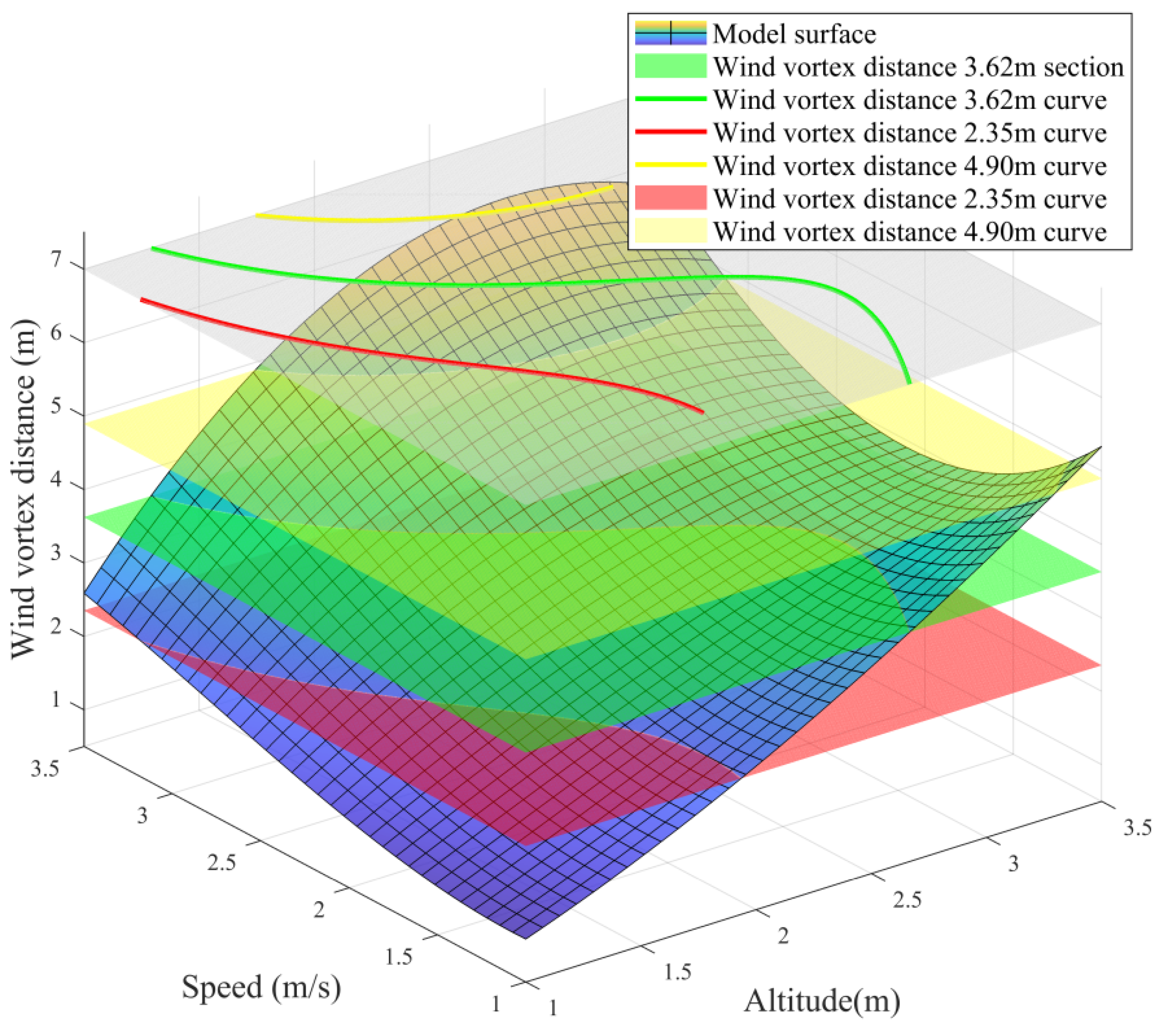
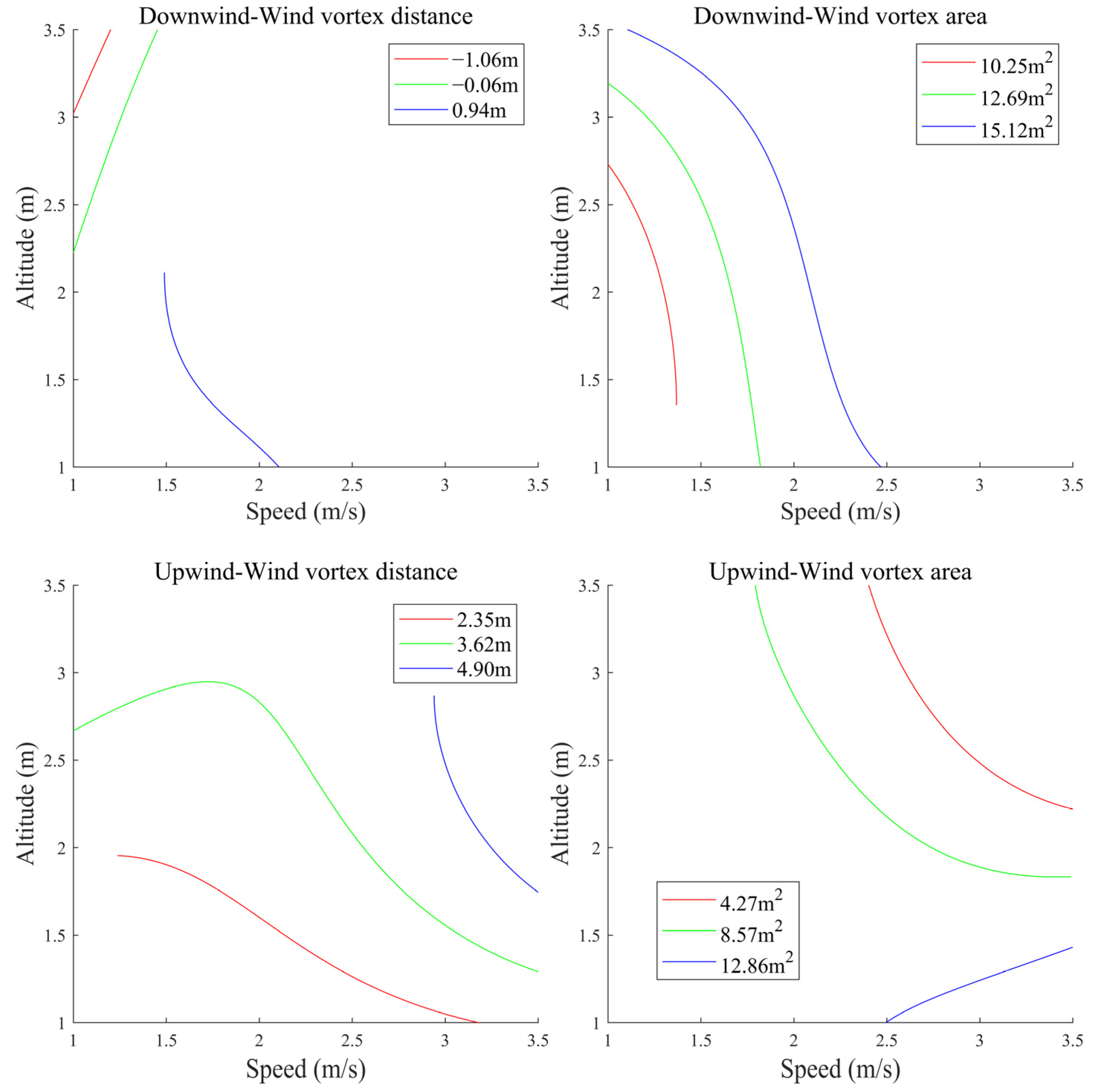

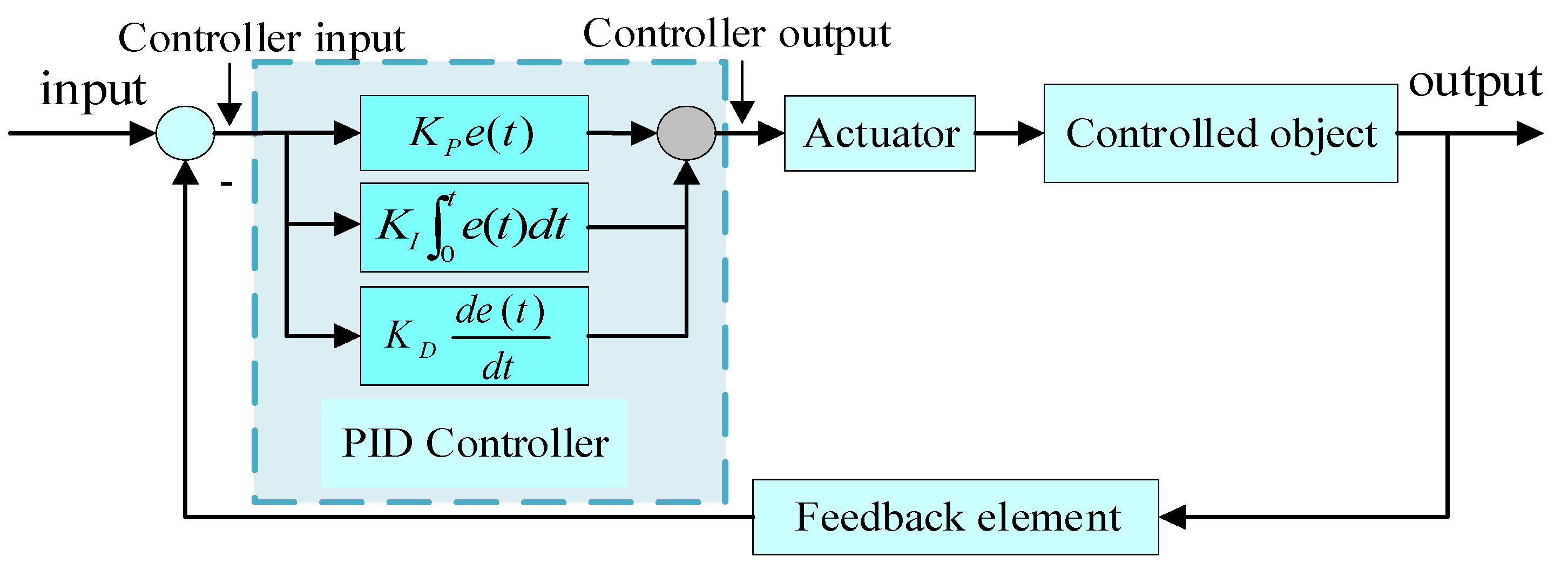


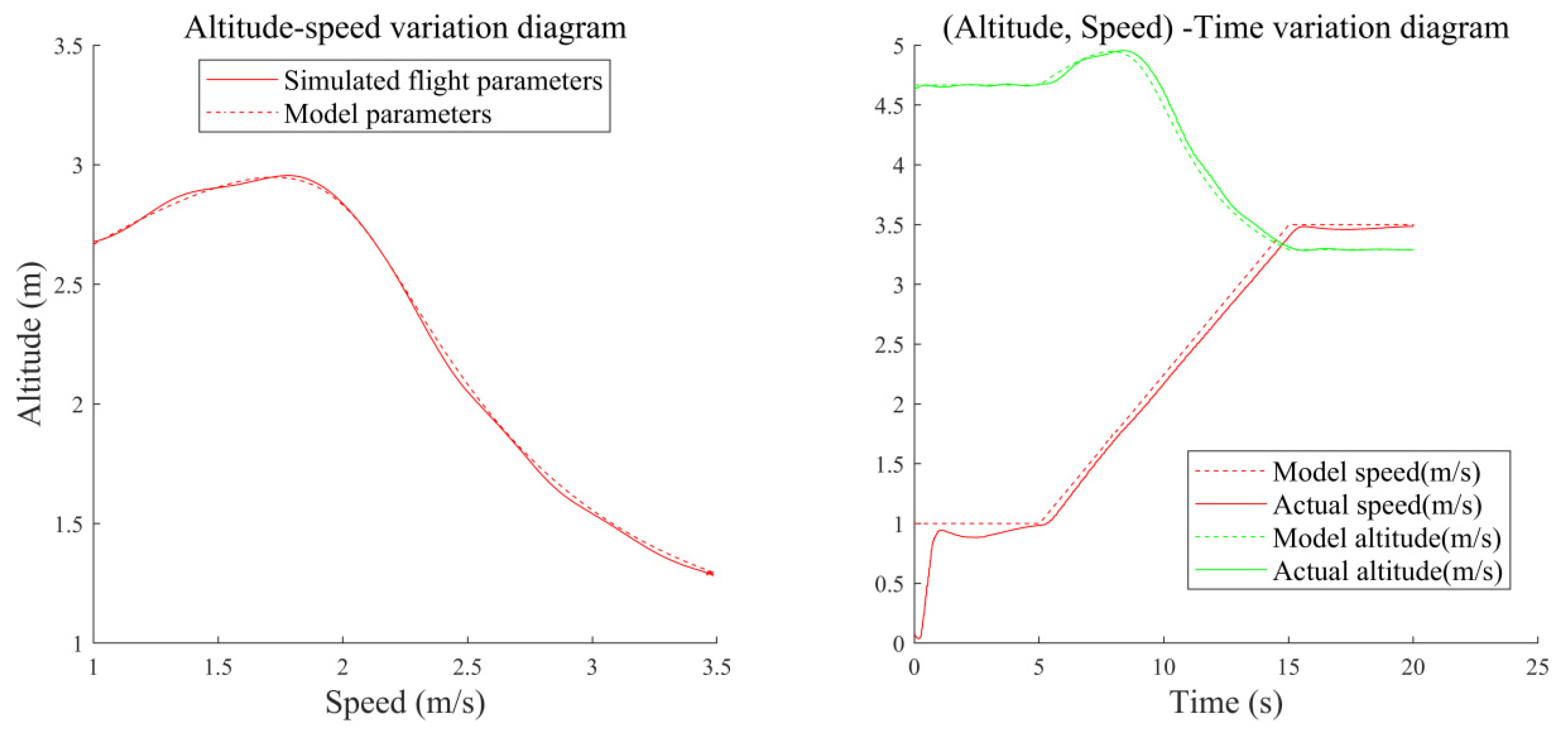
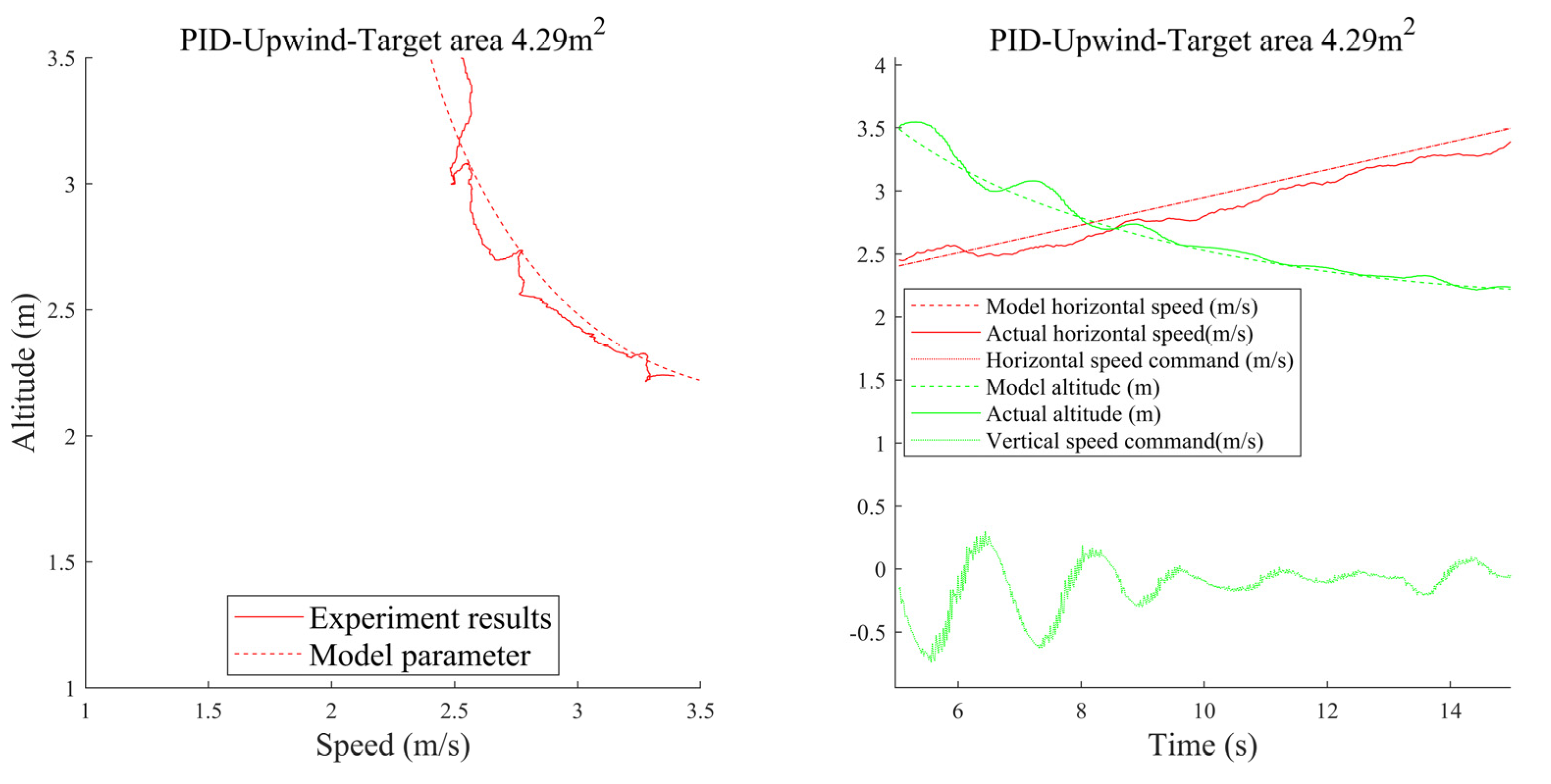


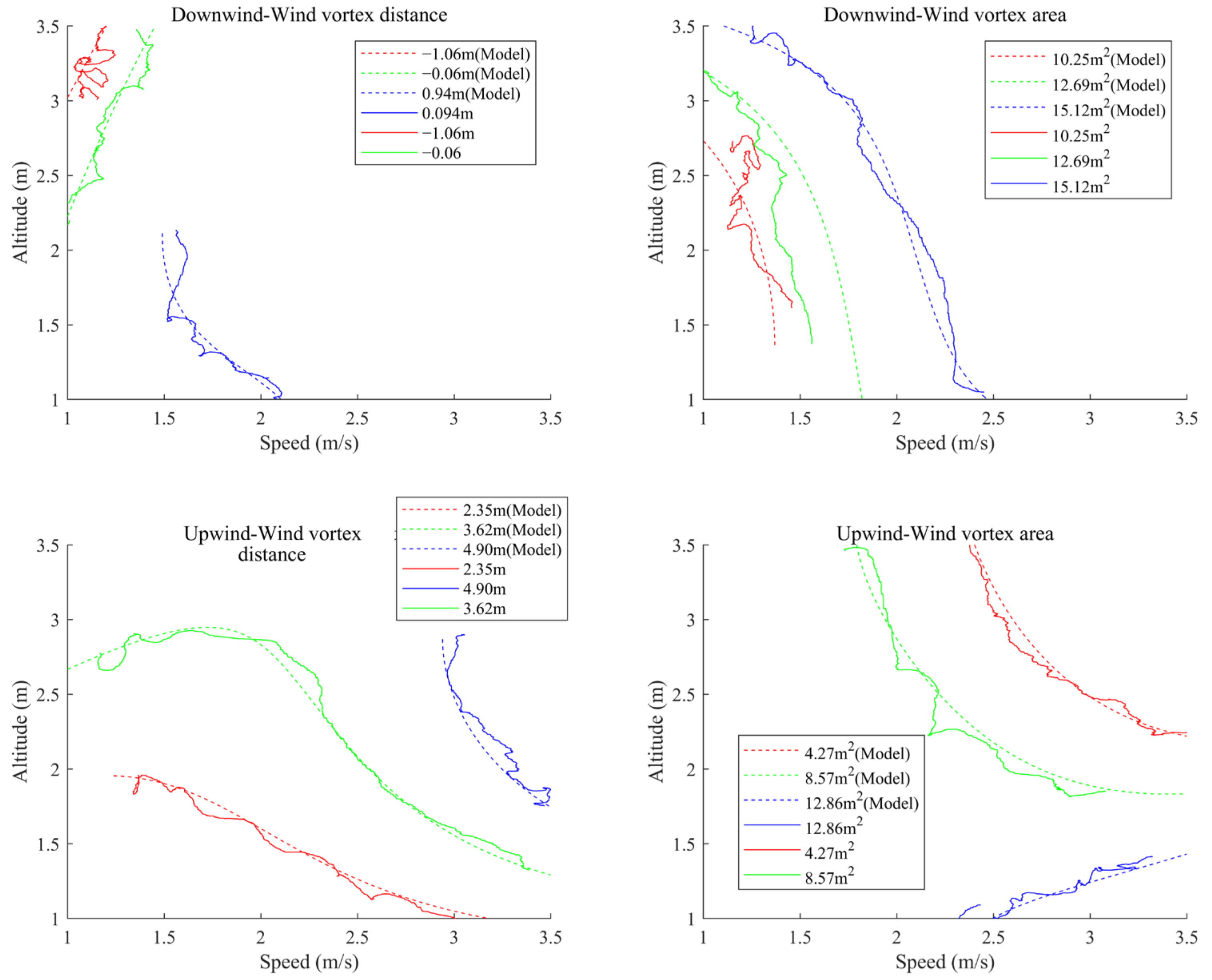

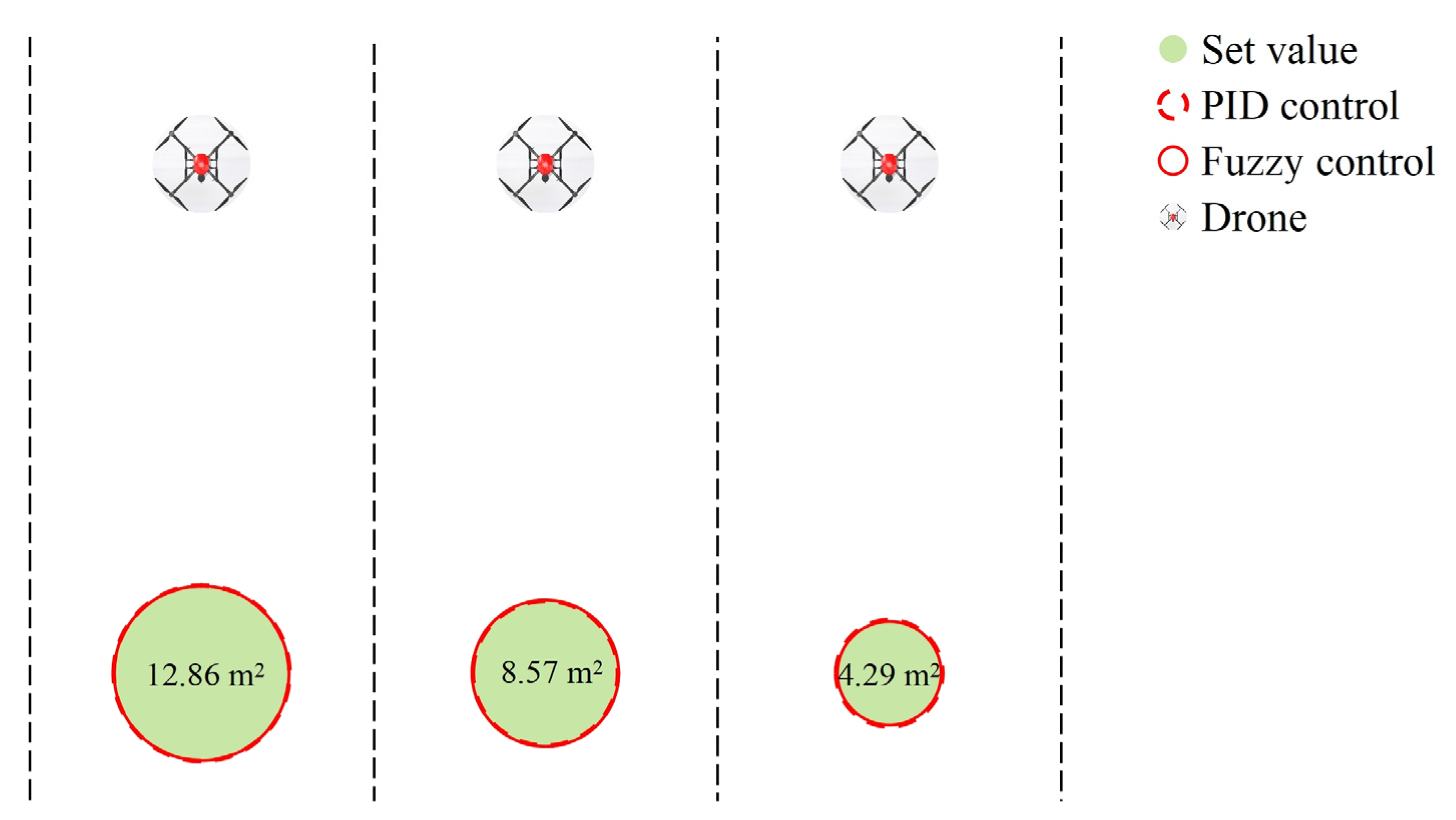

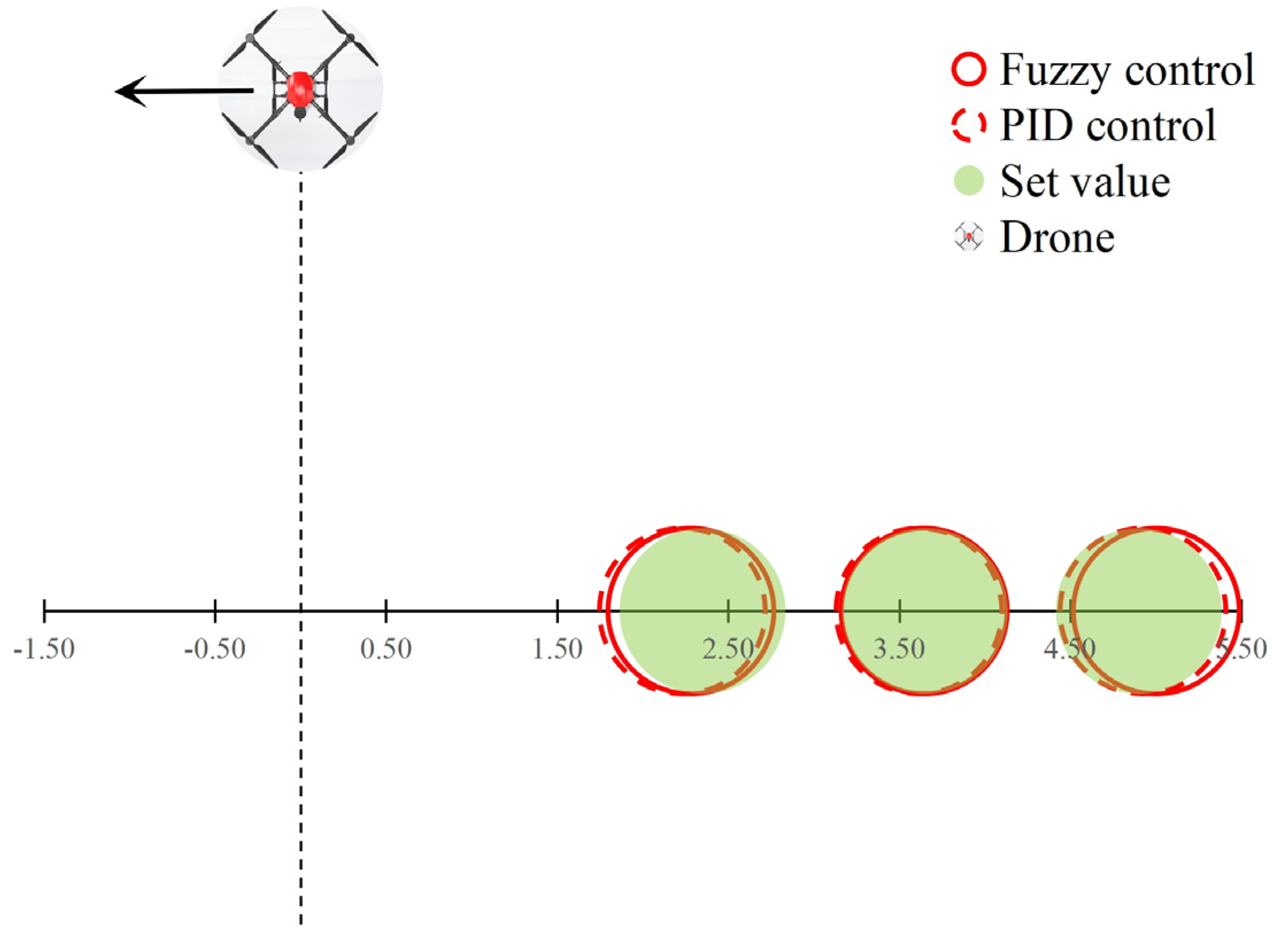
| PB | PS | O | NS | NB | |
| PB | NB | NB | NB | O | O |
| PS | NB | NS | NS | PS | PS |
| O | NS | NS | O | PS | PS |
| NS | NS | NS | PS | PS | PB |
| NB | O | O | PB | PB | PB |
| Wind Direction | Target | Target Value | PID Control | Fuzzy Control | ||
| Height Deviation (m) | Speed Deviation (m/s) | Height Deviation (m) | Speed Deviation (m/s) | |||
| Downwind | Area (m2) | 15.12 | 0.07 | 0.04 | 0.11 | 0.06 |
| 12.69 | 0.07 | 0.06 | 0.09 | 0.14 | ||
| 10.25 | 0.05 | 0.08 | 0.05 | 0.10 | ||
| Distance (m) | 0.94 | 0.14 | 0.13 | 0.04 | 0.04 | |
| −0.06 | 0.04 | 0.06 | 0.04 | 0.04 | ||
| −1.06 | 0.04 | 0.05 | 0.03 | 0.05 | ||
| Upwind | Area (m2) | 12.86 | 0.08 | 0.08 | 0.03 | 0.13 |
| 8.57 | 0.07 | 0.09 | 0.05 | 0.06 | ||
| 4.29 | 0.05 | 0.10 | 0.09 | 0.18 | ||
| Distance (m) | 4.90 | 0.22 | 0.05 | 0.04 | 0.05 | |
| 3.65 | 0.07 | 0.07 | 0.07 | 0.07 | ||
| 2.35 | 0.04 | 0.19 | 0.03 | 0.10 | ||
| Average | 0.08 | 0.08 | 0.06 | 0.08 | ||
| Wind Direction | Target | Target Value | PID Control Error | Fuzzy Control Error |
| Downwind | Area (m2) | 15.12 | 0.029 | 0.041 |
| 12.69 | 0.064 | 0.105 | ||
| 10.25 | 0.072 | 0.088 | ||
| Distance (m) | 0.94 | 0.106 | 0.042 | |
| −0.06 | 0.061 | 0.041 | ||
| −1.06 | 0.049 | 0.046 | ||
| Upwind | Area (m2) | 12.86 | 0.084 | 0.048 |
| 8.57 | 0.049 | 0.071 | ||
| 4.29 | 0.054 | 0.036 | ||
| Distance (m) | 4.90 | 0.143 | 0.048 | |
| 3.65 | 0.060 | 0.037 | ||
| 2.35 | 0.070 | 0.039 | ||
| Average | 0.070 | 0.053 |
| Wind Direction | Target | Target Value | Test Value | Target Parameter Offset | ||
| PID Control | Fuzzy Control | PID Control | Fuzzy Control | |||
| Downwind | Area (m2) | 15.12 | 15.15 | 15.17 | 0.03 | 0.05 |
| 12.69 | 12.75 | 12.00 | 0.06 | −0.69 | ||
| 10.25 | 9.92 | 10.57 | −0.33 | 0.32 | ||
| Distance (m) | 0.94 | 0.87 | 0.94 | −0.07 | −0.00 | |
| −0.06 | −0.03 | 0.02 | 0.03 | 0.08 | ||
| −1.06 | −1.09 | −0.91 | −0.03 | 0.15 | ||
| Upwind | Area (m2) | 12.86 | 12.80 | 12.65 | −0.06 | −0.21 |
| 8.57 | 8.74 | 8.91 | 0.17 | 0.34 | ||
| 4.29 | 4.68 | 4.45 | 0.39 | 0.16 | ||
| Distance (m) | 4.90 | 4.92 | 5.00 | 0.02 | 0.10 | |
| 3.65 | 3.62 | 3.65 | −0.03 | −0.00 | ||
| 2.35 | 2.23 | 2.28 | −0.12 | −0.07 | ||
| Wind Direction | Target | Target Value | Absolute Error | |
| PID Control | Fuzzy Control | |||
| Downwind | Area (m2) | 15.12 | 0.16 | 0.22 |
| 12.69 | 0.43 | 0.70 | ||
| 10.25 | 0.53 | 0.22 | ||
| Average (m2) | 0.37 | 0.38 | ||
| Distance (m) | 0.94 | 0.09 | 0.04 | |
| −0.06 | 0.20 | 0.13 | ||
| −1.06 | 0.21 | 0.21 | ||
| Average (m) | 0.17 | 0.12 | ||
| Upwind | Area (m2) | 12.86 | 0.60 | 0.23 |
| 8.57 | 0.26 | 0.38 | ||
| 4.29 | 0.52 | 0.32 | ||
| Average (m2) | 0.46 | 0.31 | ||
| Distance (m) | 4.90 | 0.13 | 0.12 | |
| 3.65 | 0.11 | 0.06 | ||
| 2.35 | 0.37 | 0.08 | ||
| Average (m) | 0.20 | 0.09 | ||
| Wind Direction | Target | Target Value | Variance | |
| PID Control | Fuzzy Control | |||
| Downwind | Area (m2) | 15.12 | 0.038 * | 0.074 |
| 12.69 | 0.252 * | 0.313 | ||
| 10.25 | 0.294 * | 0.471 | ||
| Distance (m) | 0.94 | 0.007 | 0.002 * | |
| −0.06 | 0.056 | 0.018 * | ||
| −1.06 | 0.064 | 0.055 * | ||
| Upwind | Area (m2) | 12.86 | 0.836 | 0.035 * |
| 8.57 | 0.070 * | 0.088 | ||
| 4.29 | 0.197 | 0.115 * | ||
| Distance (m) | 4.90 | 0.208 | 0.010 * | |
| 3.65 | 0.026 | 0.007 * | ||
| 2.35 | 0.010 | 0.004 * | ||
Disclaimer/Publisher’s Note: The statements, opinions and data contained in all publications are solely those of the individual author(s) and contributor(s) and not of MDPI and/or the editor(s). MDPI and/or the editor(s) disclaim responsibility for any injury to people or property resulting from any ideas, methods, instructions or products referred to in the content. |
© 2024 by the authors. Licensee MDPI, Basel, Switzerland. This article is an open access article distributed under the terms and conditions of the Creative Commons Attribution (CC BY) license (https://creativecommons.org/licenses/by/4.0/).
Share and Cite
Xing, H.; Liu, Z.; Huang, T.; Dong, M.; Lv, J.; Tang, F. Wind Vortex Target Control of a Plant Protection UAV Based on a Rice Wind Vortex–Flight Parameter Model. Agriculture 2024, 14, 1413. https://doi.org/10.3390/agriculture14081413
Xing H, Liu Z, Huang T, Dong M, Lv J, Tang F. Wind Vortex Target Control of a Plant Protection UAV Based on a Rice Wind Vortex–Flight Parameter Model. Agriculture. 2024; 14(8):1413. https://doi.org/10.3390/agriculture14081413
Chicago/Turabian StyleXing, Hang, Zhijie Liu, Taoran Huang, Minyue Dong, Jia Lv, and Feng Tang. 2024. "Wind Vortex Target Control of a Plant Protection UAV Based on a Rice Wind Vortex–Flight Parameter Model" Agriculture 14, no. 8: 1413. https://doi.org/10.3390/agriculture14081413






